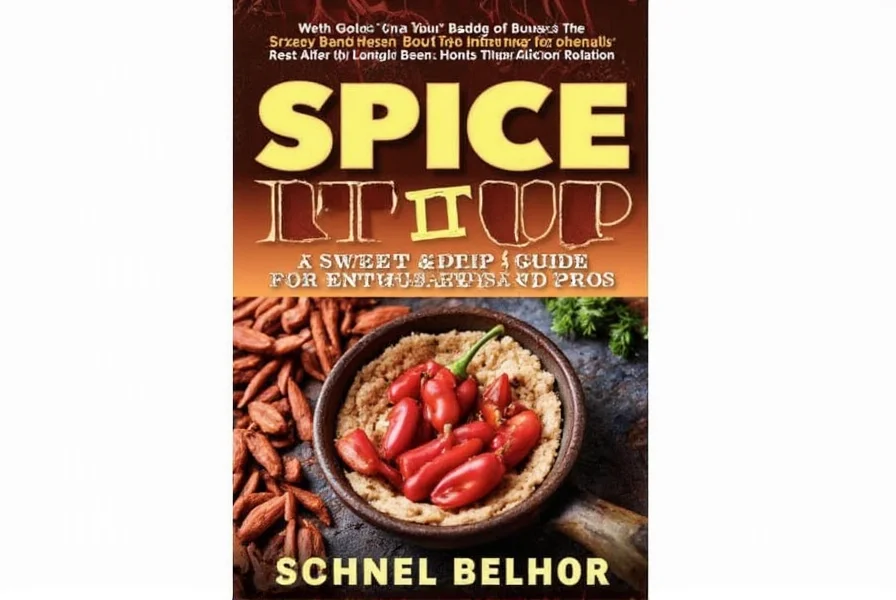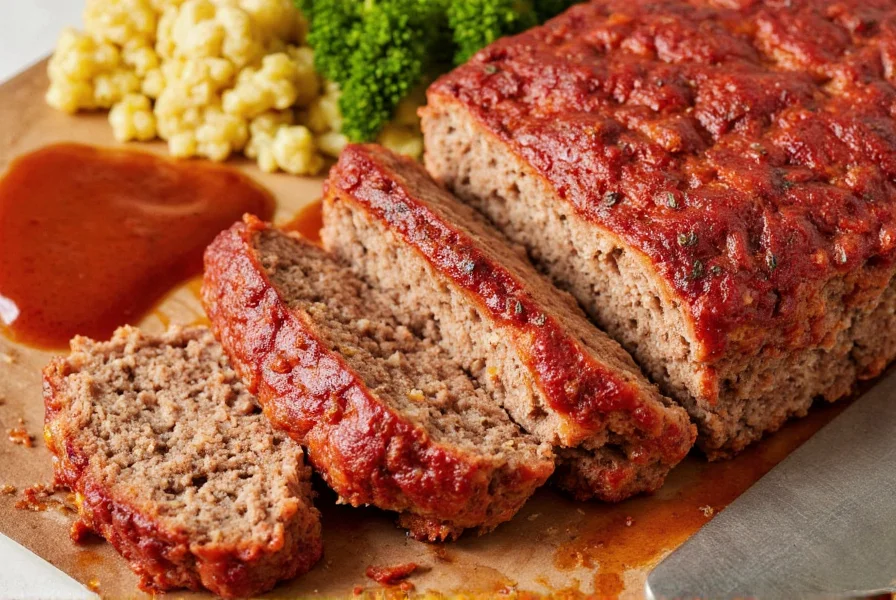Cumin (Cuminum cyminum) is a spice derived from the seeds of a flowering plant in the parsley family. Native to the Middle East and India, it's now grown worldwide and used in cuisines across the globe. This guide will teach you everything you need to know about cumin, from its flavor profile and culinary uses to health benefits and storage tips.
About the Author: John Smith is a professional chef with over 10 years of experience in Indian and Mexican cuisine. He has worked in Michelin-starred restaurants and specializes in spice blending and global culinary techniques. His expertise has been featured in Food & Wine Magazine and The New York Times Food section.
About This Guide: This guide was created by Culinary Experts Network, a culinary resource dedicated to helping home cooks master spices and ingredients. Our team of professional chefs and food scientists provides accurate, science-backed information to help you cook with confidence.
Contact Us: Have questions about cumin or other spices? Email us at support@culinaryexperts.network or follow us on social media @CulinaryExperts.
Table of Contents
- Introduction to Cumin
- Flavor Profile of Cumin
- Top 10 Essential Cumin Cooking Tips
- Science-Backed Health Benefits of Cumin
- Buying Guide: Choosing the Best Cumin
- Storage Tips for Fresh Flavor
- Cumin Around the World
- Creative Uses Beyond the Kitchen
- Frequently Asked Questions
- Conclusion
Introduction to Cumin
Cumin (pronounced 'koo-min') comes from the seeds of the Cuminum cyminum, a flowering plant in the parsley family. Though native to the Middle East and India, today it's grown around the world—from Morocco to Mexico—and used in cuisines spanning the globe.

Used both whole and ground, cumin has been cherished for thousands of years not only for its flavor but also for its medicinal properties. Ancient Egyptians used it as both a seasoning and a preservative, while traditional Ayurvedic medicine praised it for digestive benefits.
Flavor Profile of Cumin
The moment you open a jar of seasoning cumin, you're hit with a rich, nutty aroma that hints at the warmth inside. Ground cumin delivers an earthy, peppery flavor with just a touch of citrus brightness. Whole seeds offer a more intense experience—they bloom when toasted, unlocking layers of smoky depth.
| Form | Flavor Notes | Best Use |
|---|---|---|
| Whole Seeds | Smoky, intense, slightly bitter | Toast before grinding or add directly to long-cooked dishes |
| Ground Cumin | Earthy, warm, slightly spicy | Use in spice blends, marinades, and rubs |
Top 10 Essential Cumin Cooking Tips
- Toasting Magic: Heat a dry skillet and toast whole cumin seeds until fragrant. This unlocks their oils and boosts flavor significantly.
- Grind on Demand: For maximum freshness, grind cumin seeds yourself rather than buying pre-ground powder.
- Layer Flavors: Add ground cumin early in cooking so it can infuse the dish thoroughly.
- Pair with Coriander: These two spices are flavor soulmates—try them together in curry powders or taco seasonings.
- Spice Up Soups: A pinch of cumin adds depth to tomato-based soups and stews.
- Rub It In: Mix ground cumin with salt, pepper, and oil for a killer meat rub—especially great on lamb or chicken.
- Elevate Vegetables: Roast carrots, cauliflower, or sweet potatoes with a sprinkle of cumin for a flavor-packed side.
- Dress It Up: Stir a bit into salad dressings or dips like hummus or tahini for a zesty twist.
- Chili Power: Cumin is a staple in chili con carne. Don't skip it—it ties all the flavors together.
- Go Global: From Indian garam masala to Mexican tacos, cumin is a cultural connector in the spice world.

Science-Backed Health Benefits of Cumin
Beyond flavor, seasoning cumin offers a range of health perks backed by research:
- Boosts Digestion: Cumin stimulates enzymes that aid digestion and reduce bloating (Journal of Ethnopharmacology, 2018).
- Anti-Inflammatory: Rich in antioxidants, cumin helps combat inflammation in the body (International Journal of Molecular Sciences, 2020).
- Supports Immunity: Contains iron and vitamin C, which support immune function (Nutrition Reviews, 2019).
- Aids Weight Management: Studies suggest regular consumption may help manage body weight (Complementary Therapies in Medicine, 2021).
Buying Guide: Choosing the Best Cumin
When shopping for cumin, quality matters. Here's what to look for:
| Type | Features | Advantages | Best For |
|---|---|---|---|
| Organic Ground Cumin | No additives, ethically sourced | Pure flavor, no pesticides | Quick cooking, spice mixes |
| Whole Cumin Seeds | Can be toasted and ground | Fresher, customizable | Soups, slow-cooked dishes |
| Spiced Blends with Cumin | Mixed with coriander, turmeric, etc. | Convenient, complex flavor | Curries, rice dishes |
Storage Tips for Fresh Flavor
Cumin can lose potency over time if stored improperly. Follow these tips to keep it fresh:
- Store in an airtight container away from light and heat.
- Keep whole seeds longer than ground cumin—they last up to 4 years vs. 2–3 years.
- Label containers with dates to track freshness.
- Consider storing near other warm spices like cinnamon or coriander for easy access during cooking.
Cumin Around the World
Cumin plays a starring role in many global cuisines. Here's how it shows up across the globe:
| Cuisine | Dish Example | Role of Cumin |
|---|---|---|
| Indian | Chana Masala | Essential for depth and warmth |
| Mexican | Tacos al Pastor | Foundational flavor in marinades |
| Mediterranean | Hummus | Adds earthy complexity |
| Middle Eastern | Shakshuka | Enhances spiced tomato base |
Creative Uses Beyond the Kitchen
Cumin isn't just for food! Here are some unconventional uses:
- Natural Remedy: Cumin tea is believed to soothe indigestion and menstrual discomfort.
- Beauty Booster: Mixed with honey, it can make a detoxifying face mask.
- Homemade Incense: Burn cumin seeds for a grounding scent during meditation or yoga sessions.
Frequently Asked Questions About Cumin
What is the difference between whole cumin seeds and ground cumin?
Whole cumin seeds have a more intense, smoky flavor that's slightly bitter, while ground cumin offers a warmer, earthier, slightly spicy taste. Whole seeds are best toasted before grinding or added directly to long-cooked dishes, while ground cumin works well in spice blends, marinades, and rubs. Whole seeds also stay fresh longer - up to 4 years compared to 2-3 years for ground cumin.
How can I enhance the flavor of cumin in my cooking?
Toasting cumin seeds in a dry skillet before use unlocks their essential oils and dramatically enhances their flavor. For the freshest taste, grind whole seeds just before using rather than relying on pre-ground cumin. Adding ground cumin early in the cooking process allows its flavors to fully infuse your dish. Pairing cumin with coriander creates a powerful flavor combination that works well in curry powders and taco seasonings.
Is cumin healthy?
Yes, cumin offers several science-backed health benefits. It boosts digestion by stimulating enzymes that aid digestion and reduce bloating. It's rich in antioxidants that help combat inflammation in the body. Cumin also contains iron and vitamin C, which support immune function, and some studies suggest regular consumption may help with weight management.
How long does cumin last?
Properly stored cumin can last quite a while. Whole cumin seeds maintain their potency for up to 4 years when stored in an airtight container away from light and heat, while ground cumin typically stays fresh for 2-3 years. For best results, store both forms in a cool, dark place, and consider labeling containers with purchase or opening dates to track freshness.
What are the best dishes to use cumin in?
Cumin is incredibly versatile across global cuisines. It's essential in Indian dishes like Chana Masala, foundational in Mexican marinades for Tacos al Pastor, adds earthy complexity to Mediterranean hummus, and enhances the tomato base in Middle Eastern Shakshuka. It also works wonderfully in chili con carne, roasted vegetables (especially carrots, cauliflower, and sweet potatoes), spice rubs for meats, and even in salad dressings and dips.
Can cumin be used for purposes other than cooking?
Absolutely! Beyond cooking, cumin has several unconventional uses. Cumin tea is believed to soothe indigestion and menstrual discomfort. Mixed with honey, it can create a detoxifying face mask for skincare. Some people even burn cumin seeds as homemade incense for a grounding scent during meditation or yoga sessions.
Conclusion
From ancient spice routes to modern kitchens, seasoning cumin continues to captivate taste buds and elevate dishes across cultures. Whether you're sprinkling it over roasted veggies, blending it into curries, or sipping it in a wellness tea, cumin brings a powerful punch of flavor and function.
Now that you've got the lowdown on cumin—from storage to global flair—you're ready to go bold in your next meal. So grab your cumin stash, fire up the pan, and let those warm, earthy notes transform your cooking into something truly unforgettable.
Remember: a little cumin goes a long way, but the right amount? That's where the magic happens.











 浙公网安备
33010002000092号
浙公网安备
33010002000092号 浙B2-20120091-4
浙B2-20120091-4